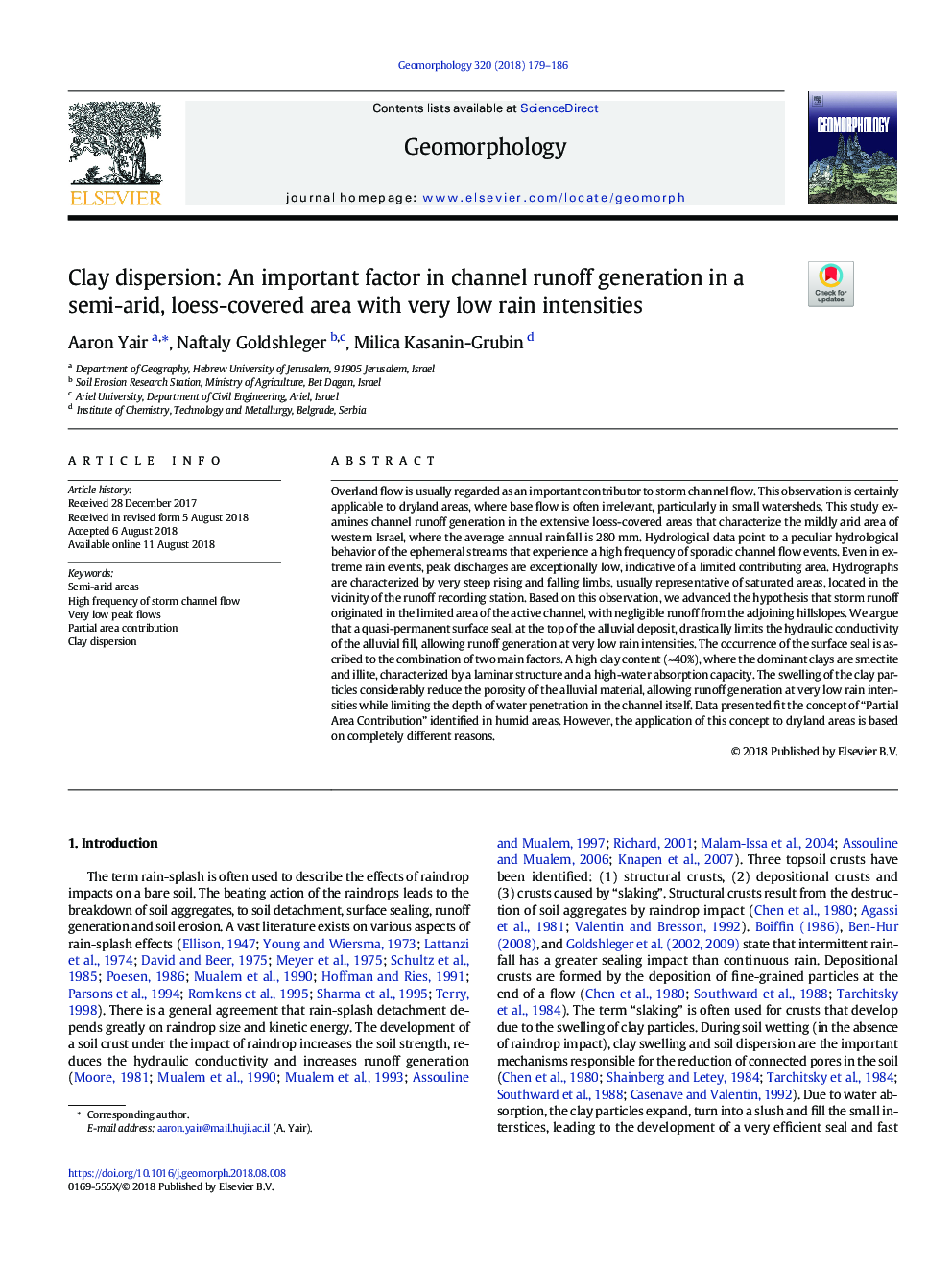| Article ID | Journal | Published Year | Pages | File Type |
|---|---|---|---|---|
| 8907909 | Geomorphology | 2018 | 8 Pages |
Abstract
Overland flow is usually regarded as an important contributor to storm channel flow. This observation is certainly applicable to dryland areas, where base flow is often irrelevant, particularly in small watersheds. This study examines channel runoff generation in the extensive loess-covered areas that characterize the mildly arid area of western Israel, where the average annual rainfall is 280â¯mm. Hydrological data point to a peculiar hydrological behavior of the ephemeral streams that experience a high frequency of sporadic channel flow events. Even in extreme rain events, peak discharges are exceptionally low, indicative of a limited contributing area. Hydrographs are characterized by very steep rising and falling limbs, usually representative of saturated areas, located in the vicinity of the runoff recording station. Based on this observation, we advanced the hypothesis that storm runoff originated in the limited area of the active channel, with negligible runoff from the adjoining hillslopes. We argue that a quasi-permanent surface seal, at the top of the alluvial deposit, drastically limits the hydraulic conductivity of the alluvial fill, allowing runoff generation at very low rain intensities. The occurrence of the surface seal is ascribed to the combination of two main factors. A high clay content (~40%), where the dominant clays are smectite and illite, characterized by a laminar structure and a high-water absorption capacity. The swelling of the clay particles considerably reduce the porosity of the alluvial material, allowing runoff generation at very low rain intensities while limiting the depth of water penetration in the channel itself. Data presented fit the concept of “Partial Area Contribution” identified in humid areas. However, the application of this concept to dryland areas is based on completely different reasons.
Keywords
Related Topics
Physical Sciences and Engineering
Earth and Planetary Sciences
Earth-Surface Processes
Authors
Aaron Yair, Naftaly Goldshleger, Milica Kasanin-Grubin,
